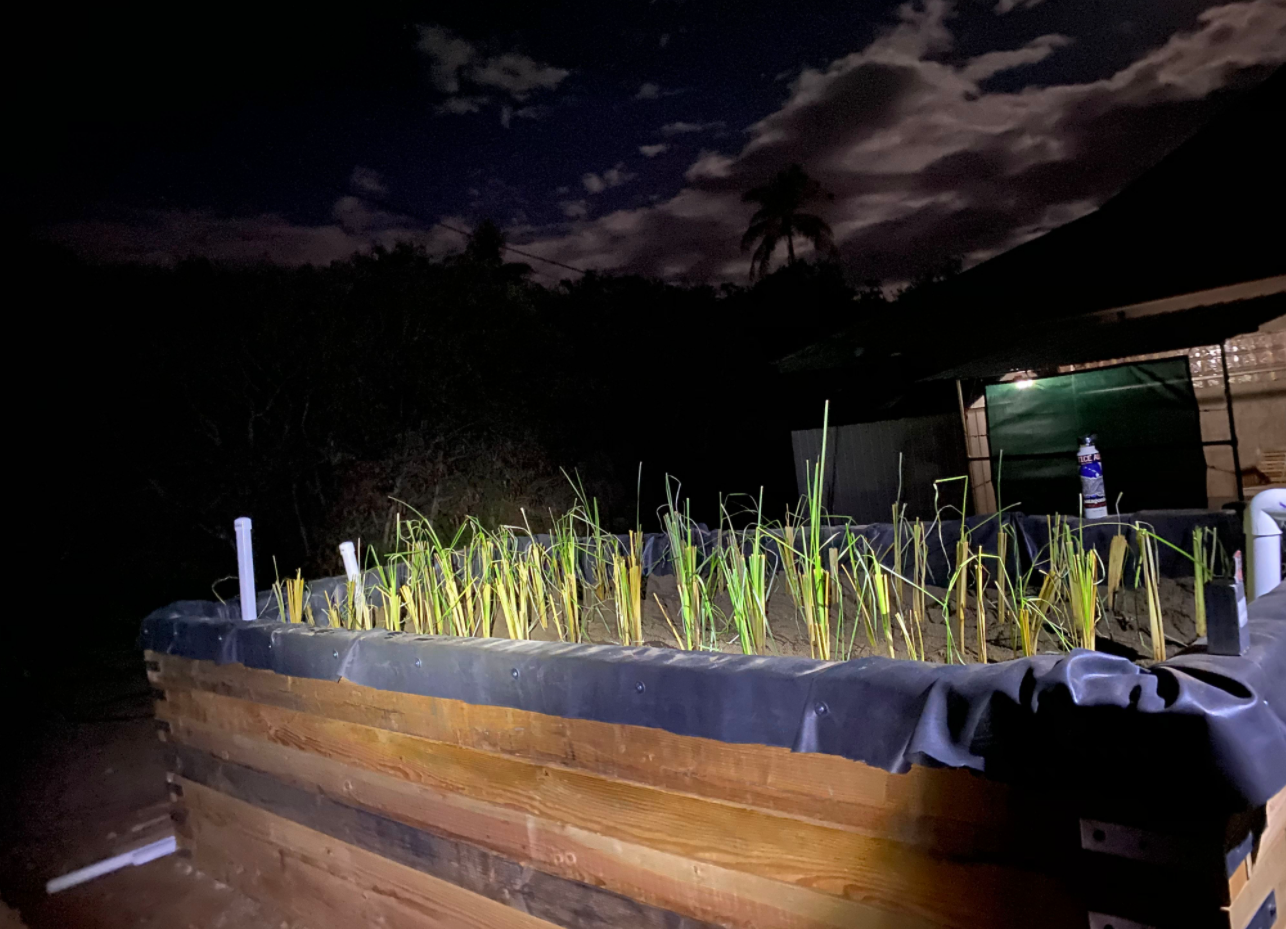Bioreactor Gardens
We are excited to announce a new grant from the IUCN (International Union for Conservation of Nature) Blue Natural Capital Financing Facility!
We will built and monitor two bioreactor gardens in Palau. We will work with local community input to design and tailor the best fit of bioreactor garden technology to Palau. We will work with finance and policy experts to support broader integration of nature based solutions in Palau.
This work is funded by the IUCN’s partnership with the Grand Duchy of Luxembourg. Luxembourg was the first seed donor to the Blue Natural Capital Financing Facility (BNCFF), and is now part of the IUCN’s Framework Partners, providing core support to the IUCN and their global efforts.
Remediating Wastewater With Garden Beds
A bioreactor garden leverages natural process of soil and vegetation growth to clean water coming from septic systems. Combining the natural processes of denitrifying bioreactors, sand filters, and phytoremediation systems (i.e. plants), bioreactor gardens effectively reduce the primary components of waste water: ammonia, nitrate, phosphorous, and bacteria.
Hope for Hawai’ian Coral Reefs
In Hawai’i alone, there are 88,000 leaking cesspools and septic tanks transporting 55 million gallons of untreated sewage each day to coastal watersheds. This leaking creates huge impacts on the health of local water and the rich coral reef ecosystem. These can be remediated with bioreactor gardens.
Bioreactor gardens are easy to maintain and can be placed in series with a septic tank to provide effective secondary treatment for any size on-site disposal system.
The System Operates in Three Layers
A top layer of native plants or vetiver grass grows and performs bioremediation (breaking down pollutants with natural organisms). These plants growing in the garden bed absorb water; evapotranspiration effectively reduces the total volume of water exiting the system.
In the middle layer, the soil in which the plants grow harbor nitrifying bacteria that covert ammonia into nitrate.
At the base layer, wood chips and biochar produced from local woody materials and invasive species serve as a carbon source for denitrifying bacteria, which convert the nitrate into harmless nitrogen gas (this is 78% of the air we breathe!)
Certification & Cost-Effectiveness
This nature-based infrastructure removes 87% of nitrogen & 96% of sediment from treated wastewater! We have tested and are currently certifying this system per NSF-245 standards for Wastewater Nitrogen Reduction in Hawai'i.
This certification will officially make this solution a viable (and aesthetically pleasing) alternative for homeowners.
Bioreactor gardens are far less expensive remediation than standard options. This cost-effectiveness will allowing more low-income homeowners the flexibility to upgrade their cesspools.
These upgrades have been made mandatory by 2050 per the statewide cesspool conversion plan.
In this manner, we can utilize low cost local materials and simple biological processes to deal with massive problems that are degrading our ecosystems, making our coastal waters safer for humans and wildlife alike.
Mahalo!
Mahalo to Woodard and Curran Foundation for funding this important work, graduate students Danielle Restelli and Kanoelani Yadao, Dr. Roger Babcock and University of Hawai’i’s Water Resource Research Center for performing the testing and certification, Bruce Zhang from East Honolulu Waste Water Treatment Plant (WWTP) for allowing the pilot project at the plant, Orrin from Malama Tree Care for the free wood chips and good vibes, Allen Fanning for assistance in constructing the system, Wastewater Alternatives and Innovations (WAI) for being a strong partner on this project, and John Astilla from Sunshine Vetiver Solutions for being part of the genesis of the project!












